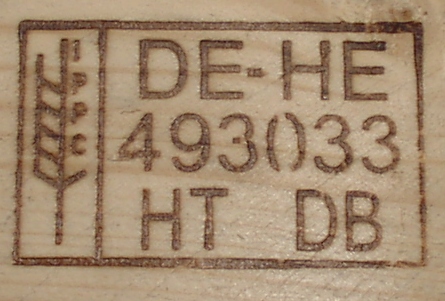Introduction To Air Cargo Handling Process
Knowing air cargo handling process is one of the first steps to a successful planning an air freight shipment. Getting your freight to your customer punctually is the set goal Detailed planning is an important part of air cargo forwarding. Careful planning is made watertight, when right information about freight handling procedures is used.
Air cargo handling procedures commence from the moment the freight is picked up and is sent on its way to the airport. Here is a short list give you a quick view:
- Pick up punctuality
- Pick up order clarification
- Physical condition of the freight before pick up
- Driver’s receipt
- Warehouse procedures
- Airline procedures
 Courtesy: Bernal Saborio
Courtesy: Bernal Saborio
Air Cargo Handling Process : A Concise Overview
The sections below will explain, in a language as simple as possible almost all the points that need to be looked into before preparing a consignment for air freight forwarding.
Documentation
One of the first points in freight handling is documentation. Without documents a shipment may not even leave the airport warehouse. Invoices, packing lists, Certificate of Origin etc. all fall under the single heading of export documentation.
Pro-Forma or Commercial Invoice and Other documents
Some countries will not accept a pro-forma invoice as a legitimate document for customs clearance. Let your consignee confirm in writing all the documents that are needed. Many countries demand that the document is signed in blue ink! No point in fretting! If the law demands a signature in blue ink, you have no other option!
The documents must accompany the shipment. In many cases copies will be enough. In the majority of cases, originals must accompany the consignment. Retain good electronic copies of all. Make them accessible via email.
Packaging
One may not believe, but the truth is, many companies do not pay attention to the packaging. I have experienced this on an almost daily basis. Air freight handling procedures include checking the packaging. Stability, possibilities for manipulating (air freight security), overhang, dimensions etc. are all important.
Packaging Materials
Are you using wood for packaging? Including dunnage? Remember to use exclusively treated wood, which carries the IPPC logo and the treatment used. See example below. for more details, please read the article on wooden packaging.

Packaging Security
Close all the slits, openings etc. No opening should be visible. Secure the cartons on pallet using strong bands. The bands or strips should not cut into the packaging. Affix shipper and consignee details on at least two sides. Make sure to use “This Side Up” label if the box should may not be turned or tipped to the side. The text DO NOT THROW should be mentioned clearly and boldly, if needed. The same applies to fragile contents.
Pick Up
The driver should sign your shipment slip with his name (block letters), registration number of the vehicle, date and time. It is the driver’s duty to note any damage that is visible on the outside of the consignment. The documents are to be handed over to the driver in person. Attach copies of documents to the shipment in waterproof pockets.
Export Warehouse
The warehouse staff will check:
- Condition of outer packaging
- Dangerous goods requirements, if the shipment is classified as such.
- Outer dimensions
- Gross weight (nett weight/quantity is not relevant except in the case of dangerous goods)
Screening
As of the time of writing this article, every consignment must have “secured” status. If the shipper is not classified as KNOWN CONSIGNOR (by the legal authority concerned), the shipment must be screened and declared SECURED by the staff authorised to do that.
Opening the shipment might be needed in certain cases. The piece(s) will be closed after inspection. This usually happens, when the content has a very high density factor, which prevents the x-rays from penetrating the material.
Screening is an inseparable part of air cargo handling process practised all over the world.
Dangerous Goods
- Is the Shipper’s Declaration correctly drawn up? (also called DGD = Dangerous Goods Declaration) . Minimum of two originals! Some airlines demand three.
- Have all the regulations been met in the description?
- Correctly labelled? No overlapping is permitted.
- A copy of the DGD (Dangerous Goods Declaration) affixed to the consignment pieces.
- correct packaging material used?
Remember, if the airline rejects a consignment, because of errors, a recheck fee will be applicable, in addition to the standard dangerous goods fee. When it comes to dangerous goods, the airlines practise a zero tolerance policy!
It must be noted that airline can offload a dangerous goods shipment quoting various reasons. Dangerous goods have no priority!
Floor Board Tolerance
The amount of weight applied on a square meter of space by the freight on an aircraft. Especially important when a pallet with chocks (feet) is used. The amount of weight focussed on one chock is the method of calculation. For detailed information, please read my article on floor board tolerance.
Avoid pallets with exposed chocks. See that the weight of the freight is distributed evenly on the pallet. Avoid overhang (freight projecting out of the pallet area.
Packaging, Dimensions And Weight
Deliberately keeping this point as the last one, so that it sticks to memory.
Air cargo handling process always include these three factors.
Specify the art of packaging on the SLI (Shipper’s Letter of Instructions): Carton/Pallet etc
If there are a number of cartons on a pallet, specify the number on the SLI
Mention the outer dimension AND the unit (cm, inches etc).
Always use the sequence: Length x Width x Height
On long haul flights, the usual maximum permissible height of the consignment per piece is 160 cm. If the freight will need a transit, it can happen that a smaller aircraft will be in operation. This will mean, the shipment must be shorter (about 70 cm in height) and a maximum of 150 Kg in total gross weight per piece!
The air cargo agent or broker must declare the nett weight of the shipment in his customs bill of entry. Mentioning the art of packaging on your documentation will help the export freight forwarder to include it on the Air Waybill or in his pre-advice to the agent abroad.
Conclusion
The salient points of air cargo handling process once again:
- Complete and correct documentation
- Right packaging materials and procedure
- Correct dimensions and weight
Further Reading:
http://Air Cargo How It Works.blogspot.de


Thank you